While ChatGPT is undoubtedly a great chatbot that can answer your questions, make the implementation of your business ideas easier, and help you accomplish writing tasks in an almost human-like manner, it’s always worth exploring other options.
You may be looking for a different conversation style or you may need a chatbot that specializes in a specific field or language or maybe you just want to see what else is out there!
Fortunately, there is a wealth of impressive alternatives to ChatGPT that are just as useful and remarkable in their unique ways. They range from intelligent chatbots that can answer your queries on diverse topics to AI-powered assistants that can help you with anything from scheduling appointments to ordering food.
Whether you’re looking for a chatbot to help you with your homework or just looking for a virtual friend to chat with, join us as we explore The Best ChatGPT Alternatives in 2024 and beyond.
Let’s get started!
1. Google Bard AI
If there is an AI-powered chatbot that came with as much pomp as ChatGPT, it has to be Google Bard AI, which was developed by Google AI and based on Google’s Language Model for Dialogue Applications (LaMDA).
Bard is designed to generate responses that resemble human speech by gathering information from the internet and can write articles, poems, music pieces, screenplays, and jokes.
Bard is trained on a massive dataset of text written by humans, allowing it to understand and respond to human language in a more natural way. It can also be used to create new software applications that would be difficult or impossible for humans to create on their own. Bard is an early experiment from Google and is powered by a research large language model (LLM).
It is grounded in Google’s understanding of quality information and is continuously updated with newer, more capable models over time. Notably, Bard aims to provide realistic, natural language responses to user questions and can be integrated into websites, messaging platforms, or applications.
It is designed to allow for more natural language queries and provides context to responses, helping with follow-up questions.
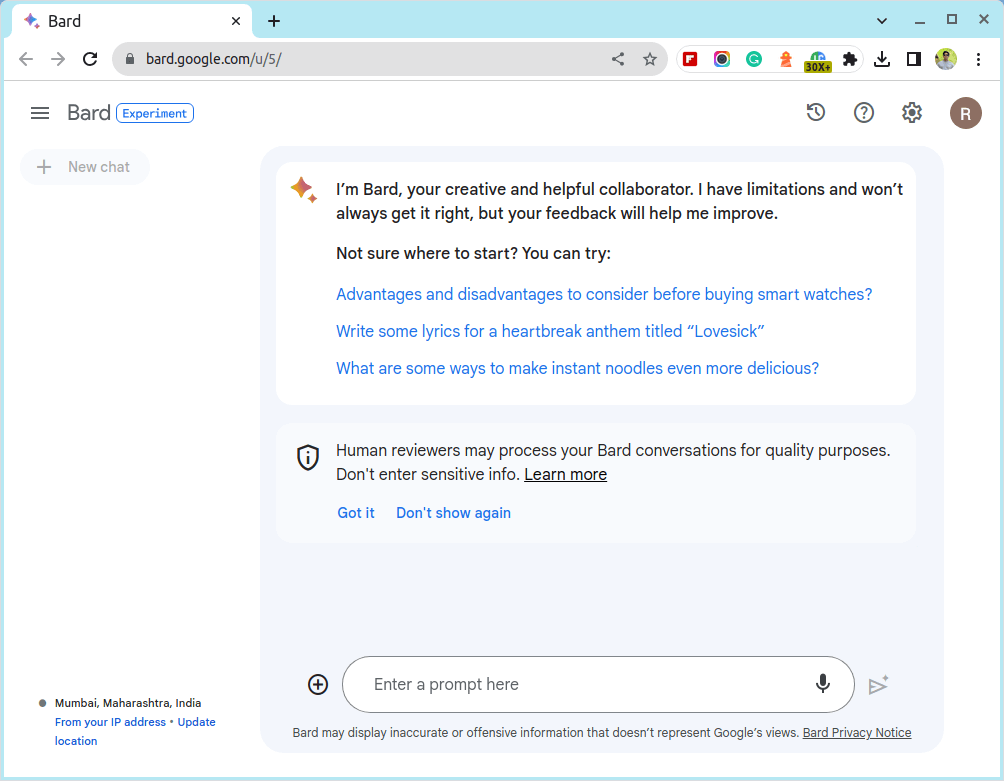
2. Microsoft Bing AI
Microsoft Bing AI is an AI-powered search engine developed by Microsoft, which uses AI to provide a more personalized and efficient search experience for users. Interestingly, Bing AI searches for relevant content across the web and then summarizes what it finds to generate a helpful response.
It also cites its sources, so users can see links to the web content it references. Bing AI is built into Microsoft Edge, including the sidebar, and can be accessed through a web browser or an app. Besides, it offers a chat experience that allows you to ask questions and get answers in real time.
Unlike most ChatGPT alternatives on this list, this chatbot is powered by GPT-4 and OpenAI, making it faster, more accurate, and more capable than previous versions.
Bing AI is designed to encourage responsible use and is continuously updated to improve its reliability and trustworthiness, making it an ideal tool for finding information quickly and efficiently.
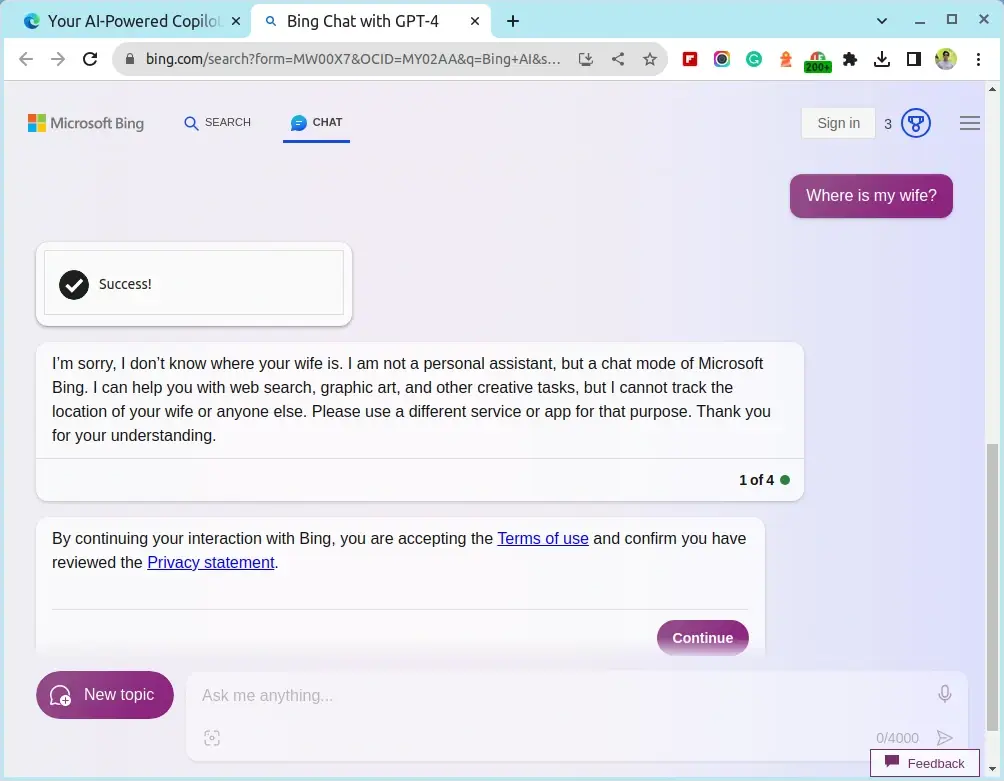
3. Perplexity AI
Perplexity AI stands out as one of ChatGPT’s most significant challenges and an impressive alternative. It is a search engine based on an AI chatbot that leverages GPT-3.5. Besides, this search engine also uses ML (Machine Learning) and NLP (Natural Language Processing) to analyze, understand, and respond to queries. Founded in August 2022 by Francesco-based app developers, this search engine has incredible features.
It takes pride in a simple user interface. Moreover, it not only provides answers to prompts and queries from users but also citations, links to the provided citations, and related topics to each query.
This characteristic makes it an excellent option for learners who prefer to check their work for credibility and accuracy. Even more, you can also get more information from related topics. And while it is relatively among the new kids in the block, it raised $26 million in March 2023.
Perplexity is currently available via all popular web browsers. You can also get it in the Google Play Store and Apple App Store if you prefer the mobile versions. Whichever method you choose, Perplexity AI is currently free, and you do not need to create an account before using it.
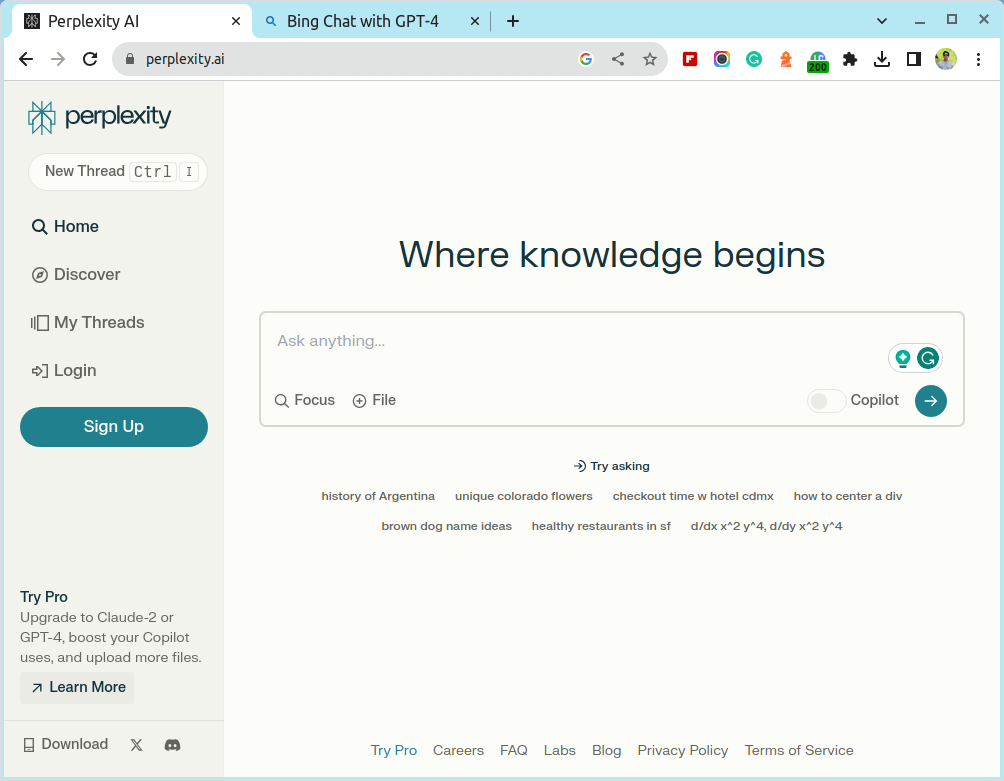
4. Replika
If you are looking for a tool that goes beyond text and code generation, Replika is the right AI tool for you. You can use this chatbot as a friend, companion, or therapist. While it is still under development, this chatbot was released in 2017 and stands out as a generative AI chatbot that is trained by having you answer a series of questions to create a unique personality.
Replika is designed to be an empathetic friend who is always available to chat. Millions of users globally have subscriptions to support this project. Replika is available on both the App Store and Google Play.
It is an AI friend that is just as unique as the user. No two Replikas are exactly alike and the more the user chats, the more Replika develops its own personality and memories alongside the user. Replika is a great option for those looking for an AI chatbot that can provide emotional support and companionship.
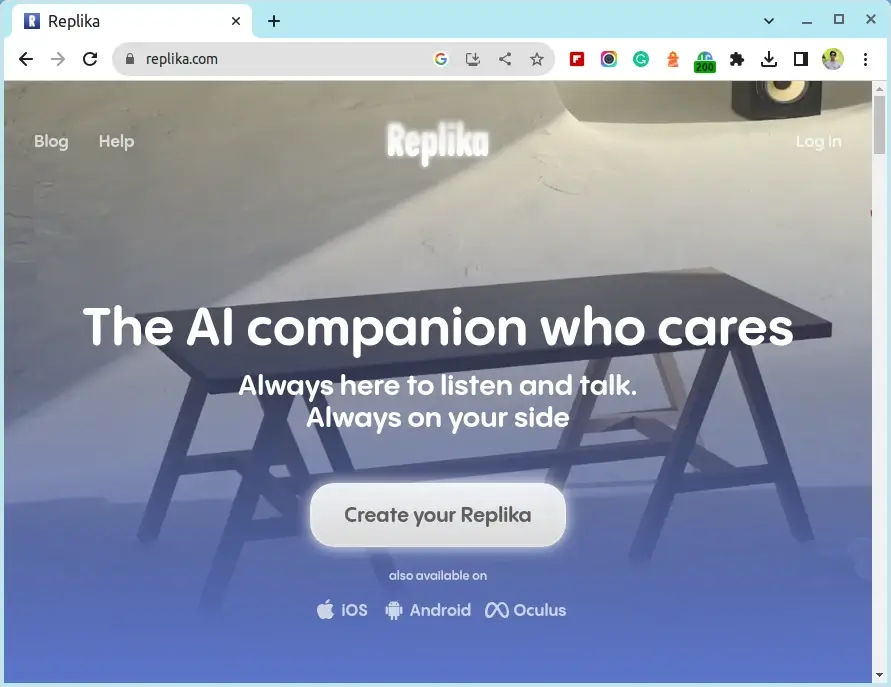
5. Jasper Chat
Another interesting alternative to ChatGPT is Jasper Chat, which is an AI writing tool that can help you create content by using artificial intelligence to provide a more conversational and engaging experience. Unlike traditional chatbots, Jasper Chat can provide appropriate responses to users by first understanding user intent during conversations.
With Jasper Chat, you can generate fresh ideas, revise your content, and even make yourself laugh. While it is not an entirely free platform, it is affordable and easy to use, making it a great option for businesses of all sizes. Moreover, you can use it to generate content in multiple languages.
Jasper Chat can be used to develop various content, including blog posts, product descriptions, marketing copy, and more. It is also an excellent tool for fleshing out ideas and getting thoughts down on paper.
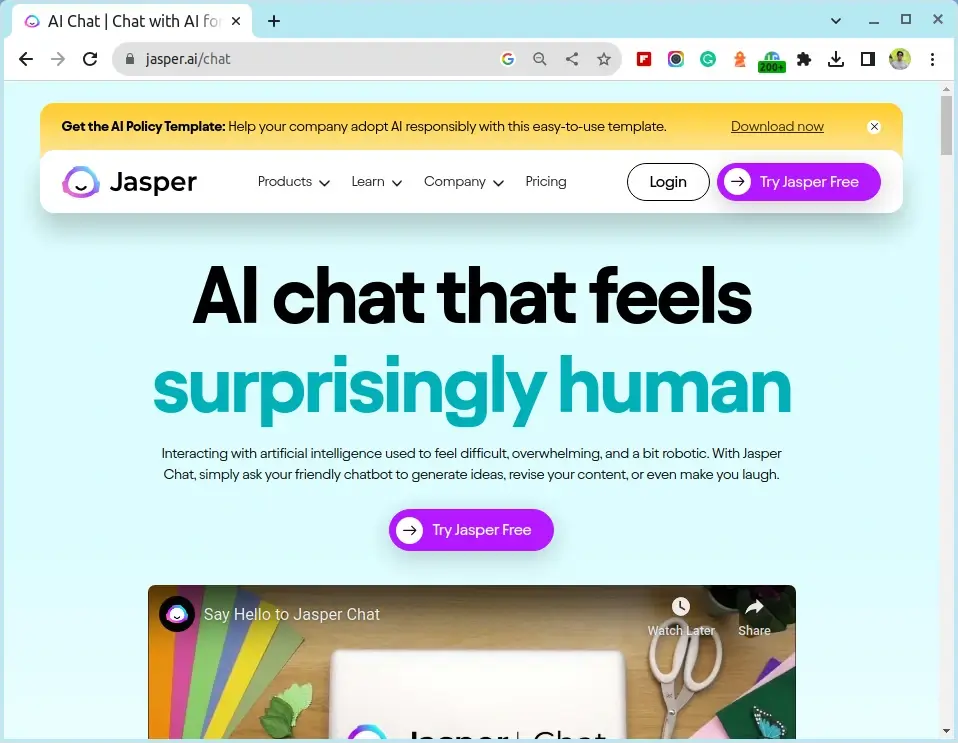
6. Inflection AI Pi
Inflection AI Pi is a personal AI designed to be supportive, smart, and available anytime. It is an AI chatbot that can be a coach, confidante, creative partner, sounding board, and assistant.
Inflection AI Pi provides infinite knowledge based on the user’s unique interests and can explain even the most complicated ideas in a clear and straightforward way.
With the objective of being kind and helpful, this AI tool can help you set alarms and reminders, send emails and messages, control smart devices, and offer emotional support.
Thus, Inflection AI Pi can help you find inspiration and strengthen your ideas, think through the pros and cons, and figure out a way forward. It can also help you organize your thoughts, make clear plans, and act on them.
Inflection AI Pi is the first product release by Inflection AI, a machine learning startup founded by Reid Hoffman.

7. YouChat
If you are looking for a chatbot that can help you learn complex concepts in simple terms, then YouChat is a perfect AI search assistant that lives in your search engine and can provide step-by-step answers and explanations right in the search results.
It is designed to be connected to the internet and can print out code while also providing up-to-date information. YouChat is also an excellent tool for generating fresh ideas, revising content, and making users laugh.
More interestingly, it can help you scale up content while maintaining high quality. This free AI chatbot can be used to interact with generative AI in a more conversational way hence a great alternative to ChatGPT and other AI chatbots. You can simply ask the friendly AI chatbot to generate ideas, polish your content, and get inspiration.
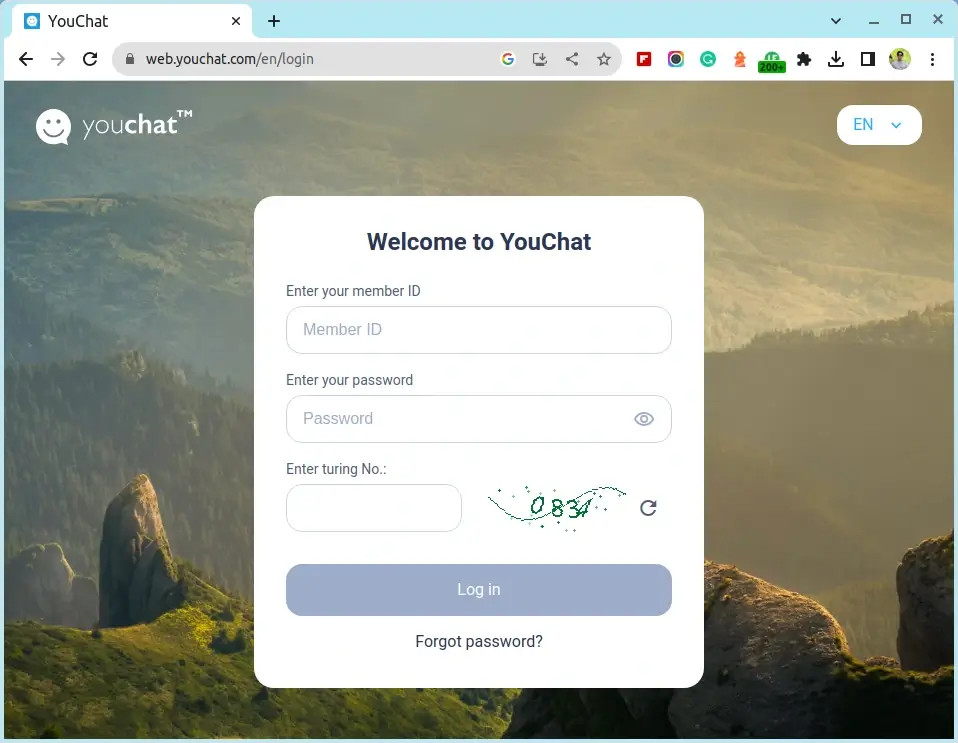
8. PepperType
Anyone who is into content creation should consider PepperType, which is an AI-powered content creation software that will help you automate the process of content ideation and creation for your business.
It uses advanced machine learning and artificial intelligence to analyze your business’s processes, understand its brand and target audience, and then produce original content.
PepperType offers a wide variety of content types, including blog intros, SEO meta descriptions, content rewrites, and product reviews. It has an intuitive user interface that is easy for anyone to use and provides monthly credits in word type rather than character type, allowing users to create more content.
Even more, PepperType offers responsive customer support and allows users to download and save the content generated for future use. It is a great option for generating quality content quickly and easily, making it a good alternative to ChatGPT and other AI chatbots.
PepperType is affordable and offers good value for money, making it a great option for small businesses.

9. LaMDA
LaMDA, short for “Language Model for Dialogue Applications“, is a family of conversational large language models developed by Google and built on Transformer. Notably, LaMDA is designed to engage in free-flowing conversations about a seemingly endless number of topics.
Unlike most other language models, LaMDA was trained on dialogue, which allows it to keep up with the flow of conversation and provide the feeling that it’s listening and responding precisely to what is being said. LaMDA is built by fine-tuning a family of Transformer-based neural language models specialized for dialog, with up to 137B model parameters.
It is designed to be safe, grounded, and high-quality, making it a great option for businesses and individuals looking for a conversational AI solution.
Moreover, LaMDA has access to multiple symbolic text processing systems, including a database, a real-time clock and calendar, a mathematical calculator, and a natural language translation system, giving it superior accuracy in tasks supported by those systems.
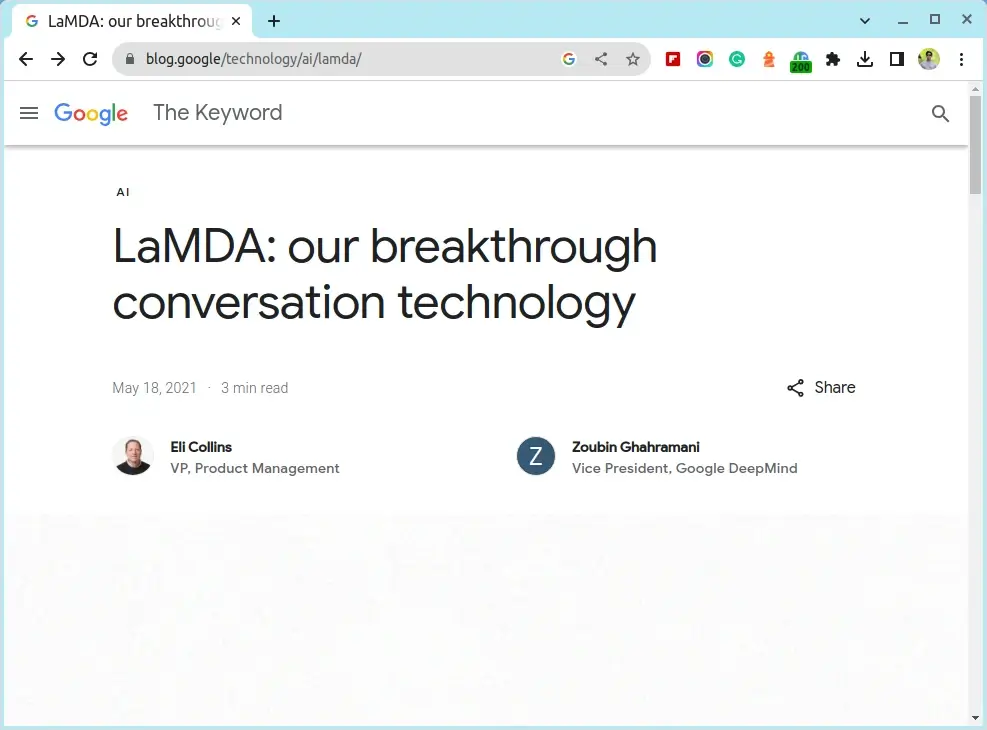
10. Tabnine
If you are a developer who is into coding, you should consider Tabnine as a perfect ChatGPT alternative and an AI code assistant that provides real-time code completions and chat for developers. It uses generative AI technology to predict and suggest the next lines of code based on context and syntax.
Tabnine is available as a plugin for IntelliJ IDEs and supports Java, JavaScript, TypeScript, Python, and more. It can be used locally or in the cloud, depending on the user’s preference.
With Tabnine, developers can increase their development velocity and eliminate repetitive coding. It is trusted by millions of developers worldwide and is designed to make developers better at their craft.
Tabnine is also available as a backend for other AI code completion tools, such as Codota. It is a closed-source backend, but users can make feature requests and pull requests for changes to the configuration files.
Overall, Tabnine is a great alternative to ChatGPT and other AI chatbots for developers looking to improve their coding efficiency and productivity.
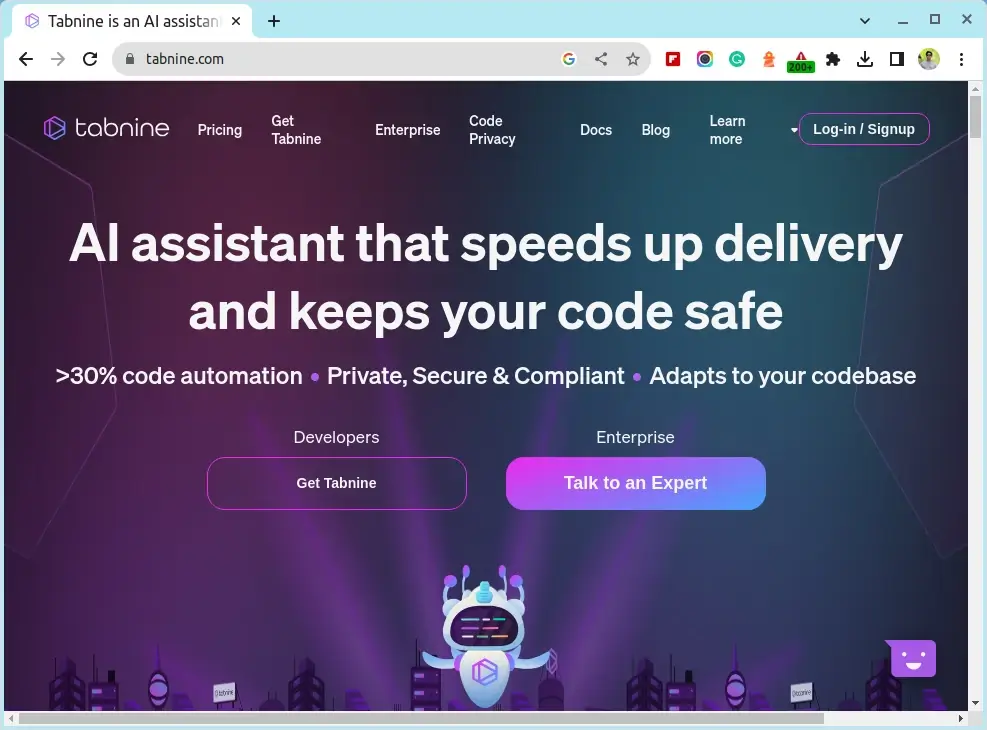
11. ChatSonic
ChatSonic is an AI-powered chatbot platform developed by Writesonic that offers a range of features for text, code, and image generation. It is designed to simplify communication, boost productivity, and help users stay organized.
ChatSonic uses a sophisticated machine learning model based on neural networks combined with scripted dialogue to simulate human speech. Interestingly, it is integrated with Google Search to create content with the latest information and generate visuals, voice commands, and more.
This chatbot platform is pretty powerful and uses the latest natural language processing technology to answer questions accurately and informatively.
It is easy to use, reliable, and secure, making it a popular choice for freelancers, agency owners, and marketers worldwide. It has become a go-to tool for professionals and organizations looking to stay ahead of the competition.
And as you will probably find out, it is a popular and likable AI software that generates content and has won the hearts of millions of users.
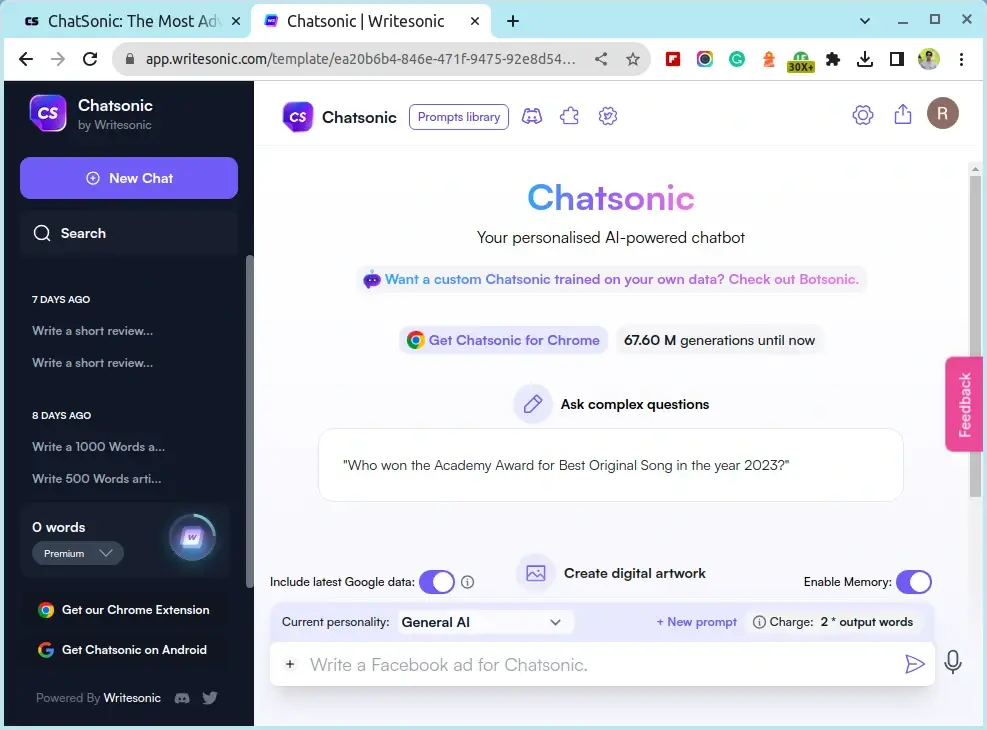
12. Character AI
Another interesting option is Character AI, a neural language model chatbot service that can generate human-like text responses and participate in contextual conversation. It is built by the previous developers of Google’s LaMDA, Noam Shazeer, and Daniel De Freitas. Character AI is currently in beta and can be accessed through its website.
The service is designed to be a more conversational way of interacting with generative AI, similar to ChatGPT and Jasper Chat. The official mobile app for Character AI is also available on Google Play. With the app, users can chat with ultra-realistic AI personalities, enjoy unlimited free messaging, and discover millions of user-created characters.
Character AI is a great tool for generating fresh ideas, revising content, and getting inspiration. It is also an excellent tool for creating captivating stories, getting homework help, learning a new language, and even writing a novel.
The service is designed to be highly customizable, allowing users to design their own AI assistant and push the frontier of what’s possible with this innovative technology.
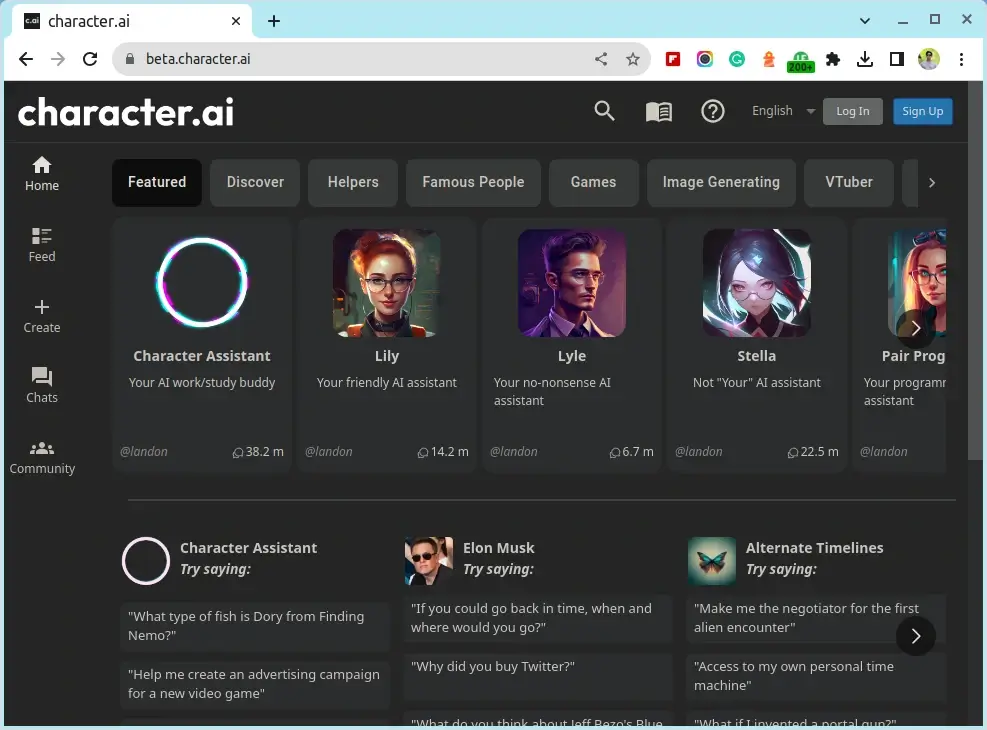
13. IBM Watsonx Assistant
IBM Watsonx Assistant is a conversational artificial intelligence platform designed to help businesses deliver consistent and intelligent customer care across all channels and touchpoints.
It is built on deep learning, machine learning, and natural language processing (NLP) models to understand questions, find or search for the right answers, and provide personalized responses.
Watsonx Assistant lets businesses build conversational interfaces into any application, device, or channel, including virtual agents and chatbots that can integrate and communicate on any channel or device.
It is designed to make it simple for businesses to get started with the new Watson Assistant experience, focused on using actions to build customer conversations.
You can use it for building a branded live chatbot into any device, application, or channel, providing your business with a powerful tool to improve customer experience. Additionally, IBM Watsonx Code Assistant is a purpose-built tool that uses AI to support application modernization and IT automation.
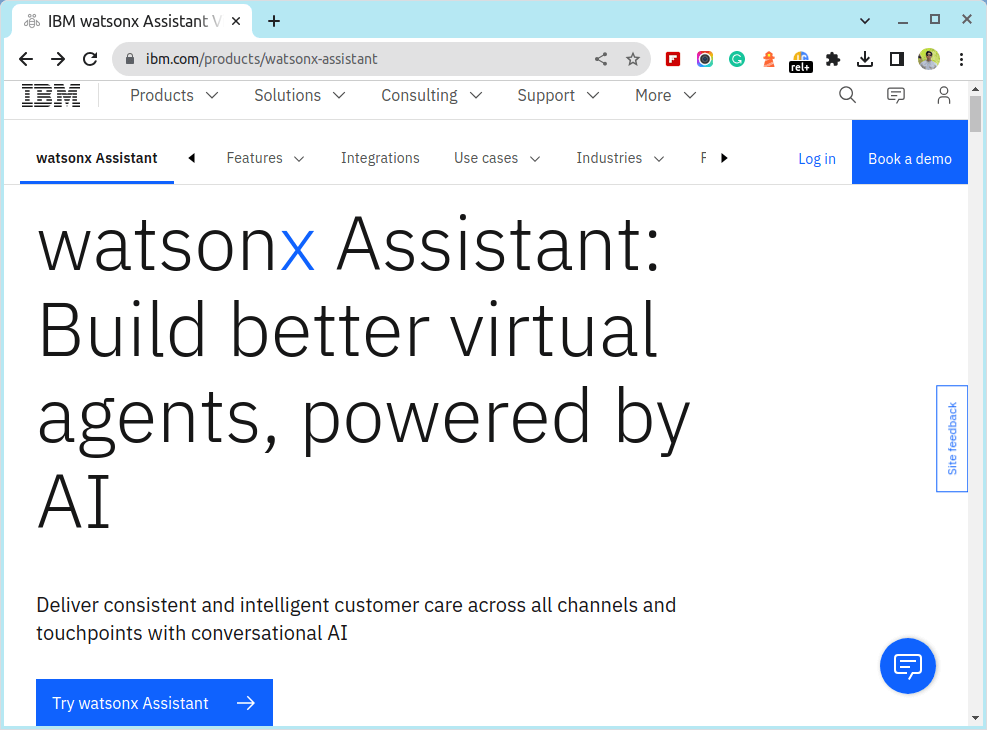
14. Hugging Face
Hugging Face is a French-American company that develops tools for building applications using machine learning. It is most notable for its transformers library built for natural language processing applications and its platform that allows you to share machine learning models and datasets.
Hugging Face was founded in 2016 by French entrepreneurs Clément Delangue, Julien Chaumond, and Thomas Wolf originally as a company that developed a chatbot app targeted at teenagers. You can use the platform for hosting Git-based code repositories, models, datasets, and web applications.
Hugging Face is a great option for developers looking for a comprehensive machine-learning platform to build and share models and datasets. Moreover, it has a lightweight web API for visualizing and exploring all types of datasets stored on the Hugging Face Hub.
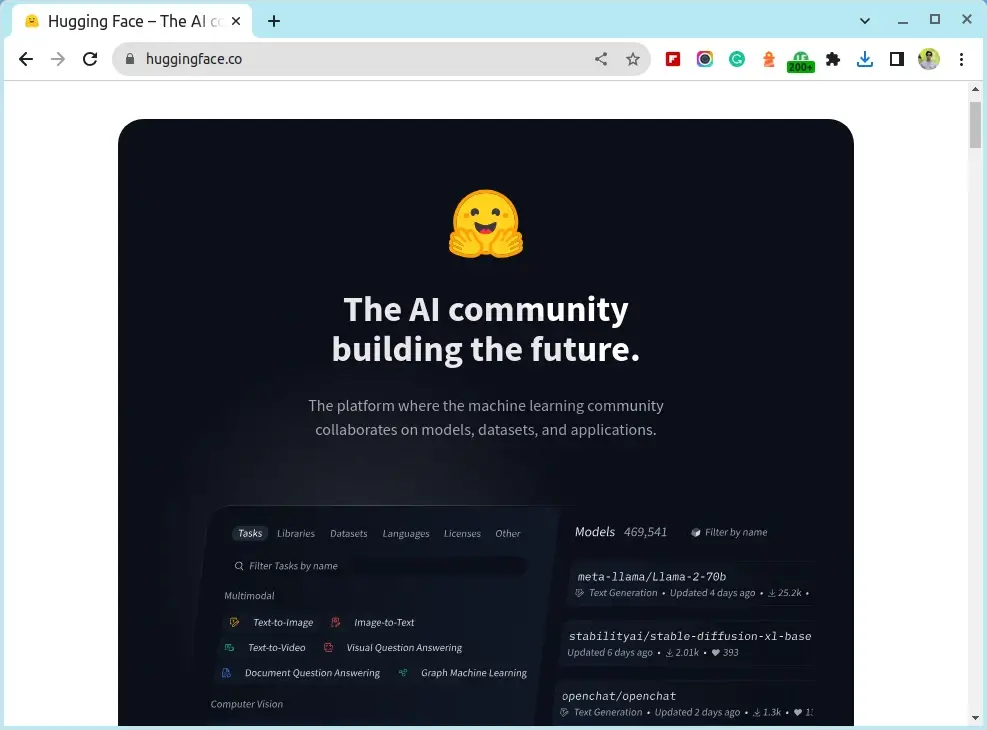
15. Dialogflow
Finally, we finish our review with another product from Google, Dialogflow, which is a natural language understanding platform that allows businesses to design and integrate conversational user interfaces into mobile apps, web applications, devices, bots, interactive voice response systems, and related uses.
It provides additional features such as an easy-to-use IDE, natural language understanding (NLU), machine learning, and more. Dialogflow is a great tool for businesses looking to build chatbots and virtual assistants.
It allows users to design their conversation, define actions in their Dialogflow agent with intents that define entry points into their action’s functionality, and create an Actions on Google developer project.
Dialogflow offers two editions: Dialogflow CX (advanced) and Dialogflow ES (standard). It is a comprehensive development platform for chatbots and voicebots that supports multi-turn conversations with supplemental questions and is built with the deep learning technologies that power Google Assistant.
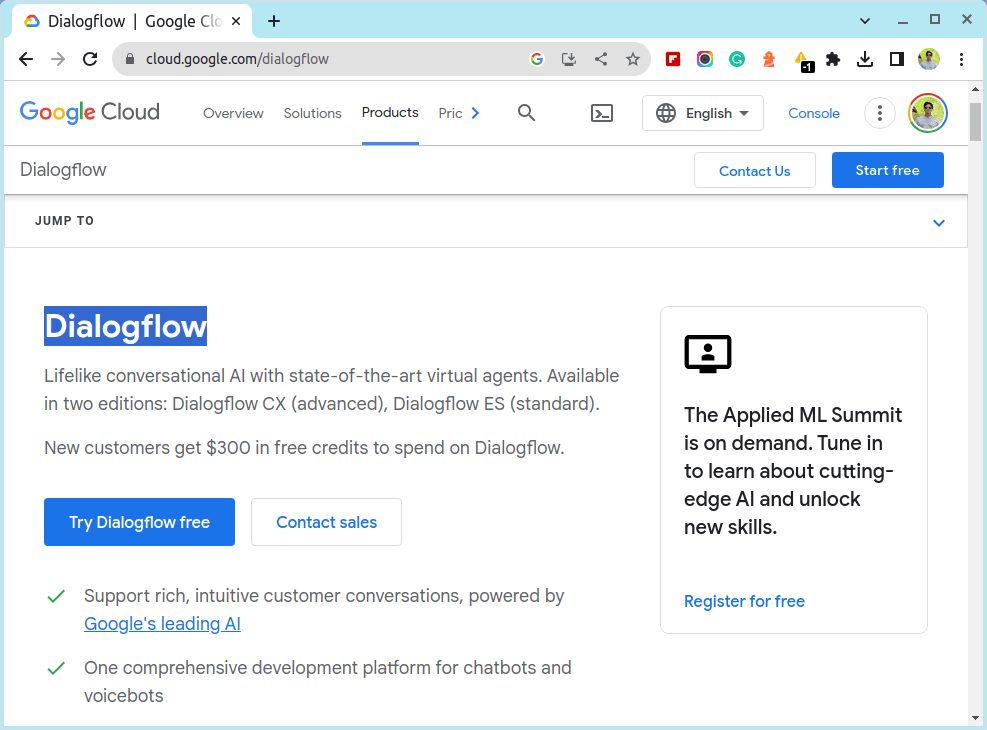
16. ContentShake AI
ContentShake AI is a content writing tool designed to assist marketers, content creators, small businesses in generating high-quality, SEO-friendly content and streamlining their workflow. The tool is developed by Semrush, a company known for its SEO products.
Some of key features of ContentShake are:
- Content Creation: It helps users generate drafts, complete with outlines, introductions, headers, body paragraphs, and conclusions. You can customize the content by adjusting keywords, readability levels, word count, and tone of voice.
- AI-Powered Writing: This feature allows users to expand, summarize, rephrase, or simplify text with ease. It also offers tools to turn paragraphs into lists and generate specific introductions or text snippets.
- SEO Optimization: Organic traffic is crucial for many content strategies, ContentShake AI analyzes the content for readability, grammar, and SEO-friendliness, so you can be confident that your content is optimized for search engines. It also includes competitive analysis, showing how top-ranking articles are structured and what keywords they use.
- Integration and Publishing: The tool integrates seamlessly with Google Docs and WordPress, enabling users to publish their content directly to their blogs. This feature simplifies the workflow and ensures consistent formatting.
- Pricing: The tool offers a free plan with limitations and an unlimited plan priced at $60 per month, which includes more content ideas and unlimited usage of AI features
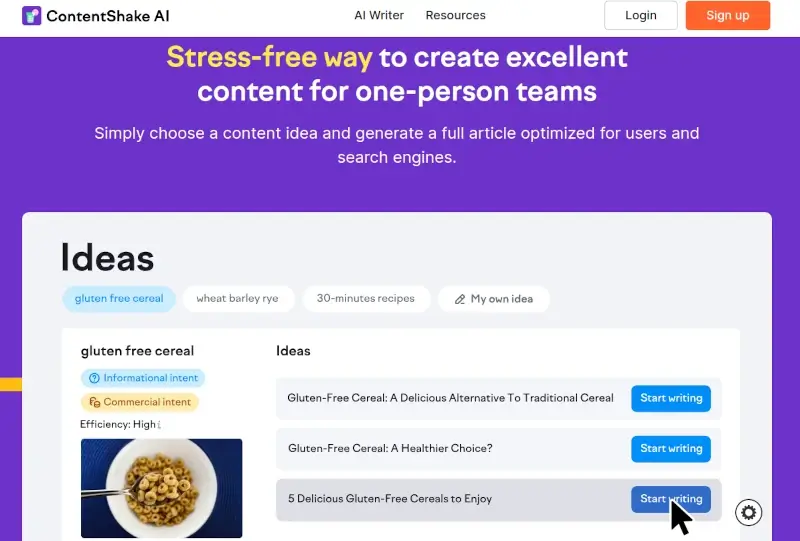
17. Llama 3 by Meta
Llama 3 stands as a significant milestone in the realm of large language models (LLMs), crafted by Meta with a paramount goal: to grasp and wield language with unprecedented efficiency. Its development involved rigorous training on a vast dataset, endowing it with exceptional prowess in language comprehension and processing
With an anticipated 140 billion parameters, it is a robust tool suited for a variety of applications, from text generation and translation to research
Unlike many powerful LLMs, Llama 3 is readily available for developers, researchers, and businesses to experiment with and build upon. Llama 3 tackles tasks like reasoning, code generation, and following instructions with impressive skill, making it a valuable tool for various applications.
Meta acknowledges the potential risks of powerful AI and includes safeguards like Llama Guard 2 to help mitigate bias and promote responsible development.
Here are some key features of Llama 3:
- Meta has already integrated Llama 3 technology into their AI assistant, Meta AI which means you can now experience Llama 3’s capabilities firsthand through Meta AI for tasks like coding and problem-solving.
- The tool boasts better scalability and handles multi-step tasks more efficiently and delivering more accurate and diverse responses compared to previous versions.
- There will be different versions of Llama 3 available, catering to various needs. Whether you require a compact 8B parameter model or a more powerful 70B version, there’s an option for you.
- It enables users to download and operate it on their own systems or via cloud services like Microsoft Azure and Amazon Web Services, utilizing platforms such as Hugging Face.
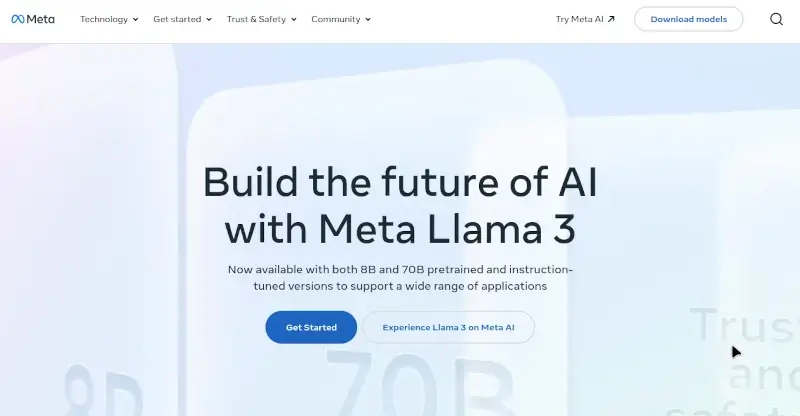
18. Claude
Claude AI, created by Anthropic, is an advanced AI assistant that can help with many tasks quickly and reliably. It can chat with you, answer questions, and assist with various activities.
Key Features of Claude AI:
- Claude AI is designed to be safe and ethical. Anthropic focuses on making AI helpful, honest, and harmless.
- Beyond just text generation, Claude can perform complex tasks like reasoning, analyzing images, translating languages, and even writing code. This makes it useful for many different purposes.
- It is known for its fast processing. It can quickly handle large amounts of text and analyze research papers in seconds.
- Anthropic offers various versions of Claude, including a free, lightweight version called Claude Instant and a more powerful paid version, Claude 3.
- Claude AI stands out for its focus on responsible development and advanced capabilities in reasoning and code generation.
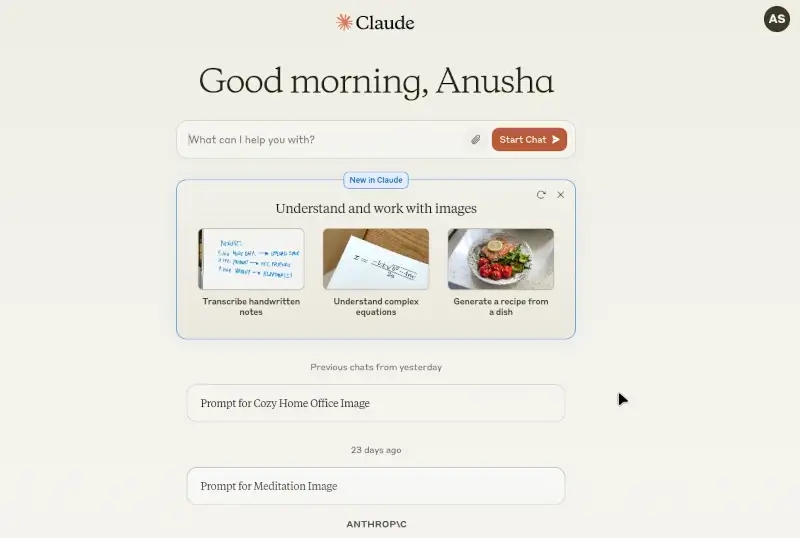
19. GitHub’s Copilot
GitHub’s Copilot represents a groundbreaking advancement in coding assistance, revolutionizing the way developers interact with their code. Developed by GitHub in collaboration with OpenAI, Copilot leverages machine learning to generate code suggestions, speeding up development workflows and enhancing productivity.
With its ability to understand context and generate accurate code snippets, Copilot has quickly become an indispensable tool for programmers across various domains.
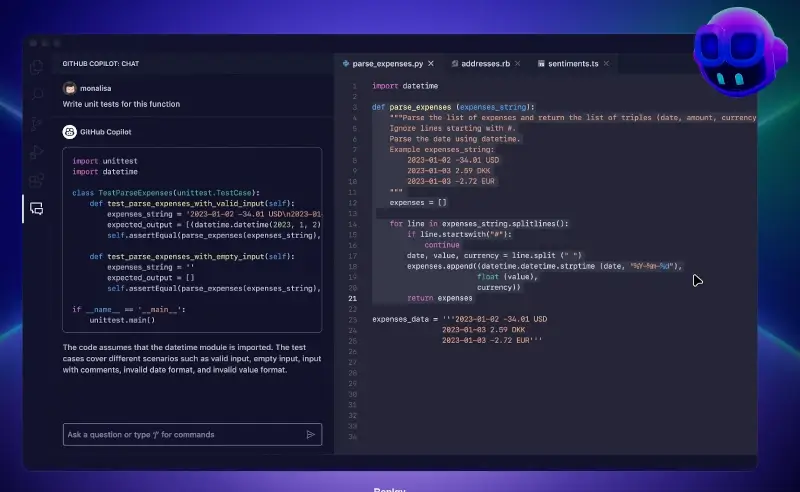
20. Codeium
Codeium is an AI-powered toolkit designed to supercharge a developer, programmer, and software engineer’s workflow by assisting with writing code.
Codeium uses smart technology to help you write code faster and with fewer mistakes. It works as you type, suggesting what you might want to write next.
This is really helpful, especially if you’re working with tricky languages or writing long lines of code. Codeium works with lots of different programming languages, so it’s useful for all sorts of projects.
You can also use Codeium to find specific bits of code or functions, either in your own code or in a big online database. This saves you time looking through lots of documents or code collections.
If you’re stuck on a coding problem, Codeium has a chat feature with AI. You can ask questions and get help right away. This is great for fixing problems or understanding how to write certain bits of code.
One really cool thing about Codeium is that it works with lots of different programs that developers use. So whether you like using Visual Studio Code or online tools like Jupyter Notebook, Codeium fits right in and makes coding easier for you.
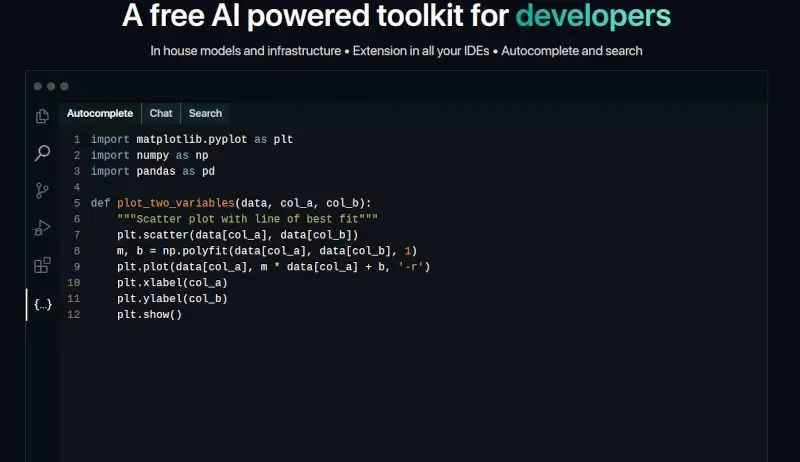
21. Cohere Generate
Cohere Generate offers AI-powered text generation using Large Language Models (LLMs). These models are like super-smart assistants trained on huge amounts of text data and can be adapted to fit the needs of big companies.
With Cohere’s technology, you can generate text for various purposes, like writing articles, emails, or even code comments. It’s a powerful tool that can save time and provide valuable assistance in creating high-quality written content
One of Cohere’s newest tools, Embed 3, is like a supercharged engine for understanding text. It’s really good at finding the right information when you’re searching for something online. Even if the text is a bit messy or not totally correct, Embed 3 can still figure out what you’re looking for.
Basically, Cohere’s models are awesome for creating text, sorting it into categories, and finding exactly what you need when you’re searching for something online.

22. OpenAI Playground
The OpenAI Playground is a website where you can use OpenAI’s big language models (LLMs) right in your web browser. It’s like a fun spot where you can try out artificial intelligence (AI) and see what it can do.
You can experiment with all sorts of AI projects, like talking robots or recognizing images, and see how they’re taught to do neat things. Whether you’re just starting or you know a lot about AI, the Playground lets you explore and try things out.
Key features of Open AI Playground:
- Make different kinds of creative writing by giving the AI ideas and directions.
- Ask questions and get helpful answers based on what the AI knows.
- Learn about what the AI can do and think about how it could be used for different things.
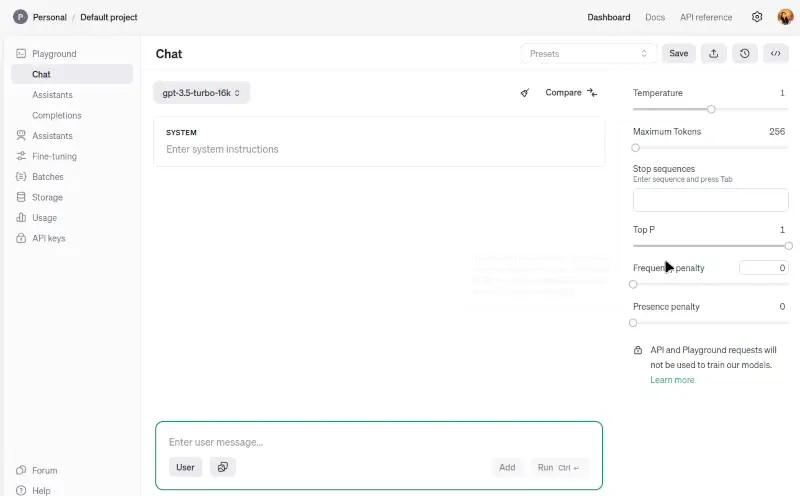
23. Midjourney
Midjourney is an advanced AI tool that allows you to generate artistic images based on written descriptions or prompts you provide in natural language.
You can use Midjourney through the team chat app Discord, where you interact with the Midjourney Discord Bot by providing prompts. Compared to OpenAI’s DALL-E 3, Midjourney offers more customization options, particularly for professional designers and artists. It excels in creating extremely realistic images.

24. Pi.ai
Pi is like your personal assistant app always there to lend a hand whenever you need help. It’s an app with a friendly AI inside, kind of like Siri or Alexa.
Pi helps with scheduling appointments or meetings, creating shopping lists, answering questions, setting reminders and alarms, or performing other functions based on the user’s needs.
It’s like having your own AI-powered helper tailored to your preferences and requirements. Pi is available anytime, day or night, to engage in conversation or offer support.
Pi is designed to understand your emotional state and respond in a comforting or encouraging way. It can be a listening ear when you need to vent or a source of motivation when you’re feeling down.
If you have questions, Pi can look up answers online for you. Whether you need a recipe, a fun fact, or directions to a place, Pi has got you covered.
Interactions with Pi shape its understanding of you. The more you use it, the better it tailors its responses and suggestions to your preferences and interests.
Plus, the app can also help you get creative! It can assist you in writing all sorts of things, like poems or bits of code. And you can also just chat with Pi about your day or anything else on your mind.
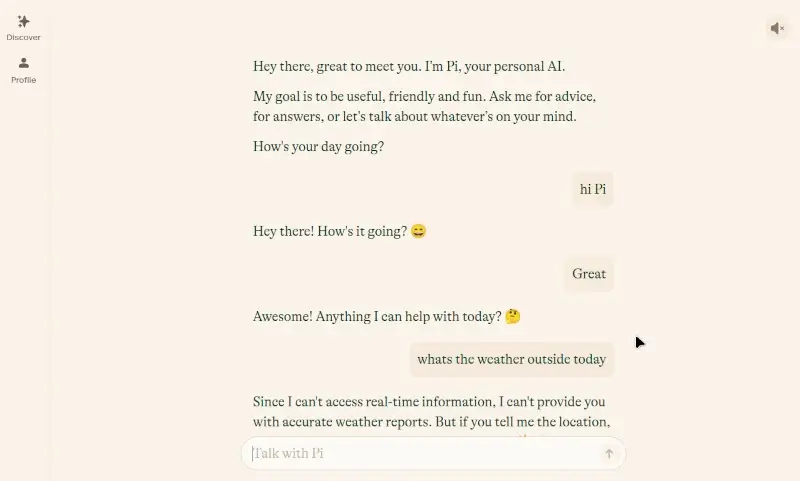
25. Otter
Otter AI is a clever tool that transcribes spoken words like audio and video recordings into written text in real-time making it a valuable tool for various purposes such as:
- Taking Notes: It listens to meetings, interviews, or lectures and writes down the important stuff, so you can look back at it later.
- Getting More Done: Since Otter AI writes things down for you, you can pay more attention to what’s happening instead of worrying about taking notes.
- Helping Everyone: It’s great for people who find it hard to write notes by hand or who want to keep a written record of what’s said.
- Working Together: You can share the notes Otter AI makes with your coworkers or team members, so everyone’s on the same page.
Basically, Otter AI helps make talking easier by turning it into written words quickly and easily.
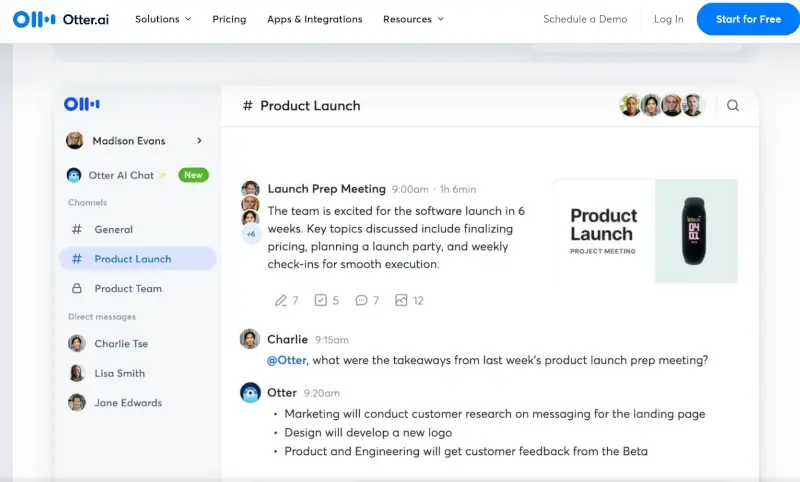
Conclusion
This brings us to the end of our article on the best ChatGPT alternatives in 2024. These alternatives, driven by cutting-edge advancements in natural language processing and machine learning, promise to redefine the way we interact with AI-driven chatbots, virtual assistants, and customer support systems.
As the field continues to advance, it’s crucial to stay updated with the latest developments in conversational AI.
These alternatives not only empower businesses and developers to create more engaging and efficient chatbots but also offer users more intelligent and context-aware interactions.
